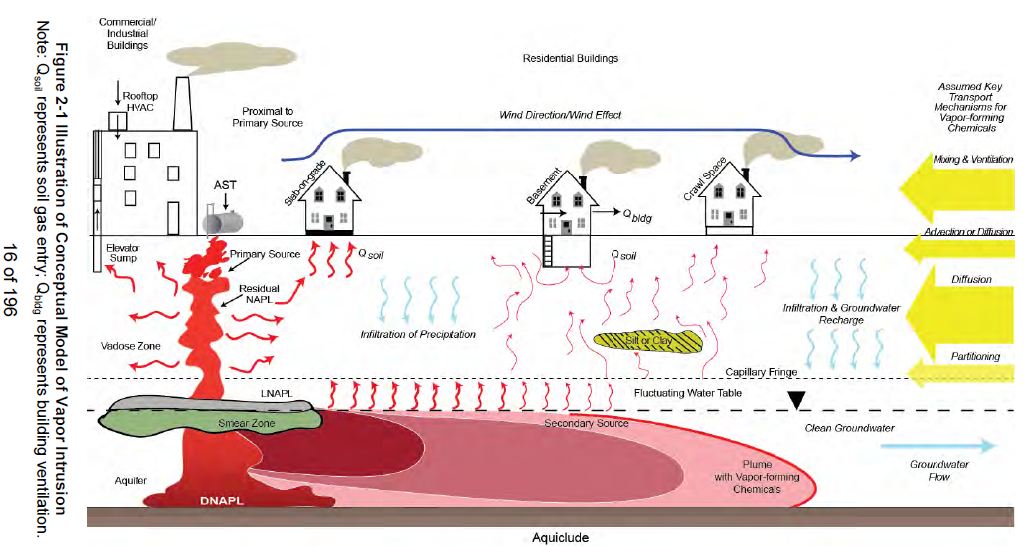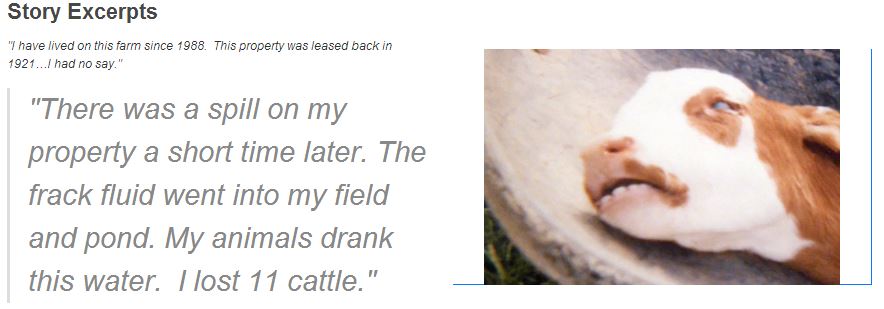Potential Health Hazards from Shale Gas Exploration and Exploitation by Severine Louis, M.Sc., Toxicologist Project Manager- Risk Analysis and Marie-Odile Fouchecourt, Ph.D. Toxicologist Project Director-Risk Analysis, May 4, 2012, for Mr. Richard Carrier, Head, Chemical Assessment Section Safe Environments Directorate, Health Canada, 0/Ref.: RA 11-410, Y/Ref.: SO No. 4600000047
[The Council of Canadian Academies (CCA) did not reference or mention this report, even though Health Canada’s frac hazards analysis was completed 2 years before the CCA frac panel report was released. The report was sent to journalist David Kattenburg late March 2014 under his Freedom of Information Request.]
Important quotes from the Heath Canada report:
Although the risks related to hydraulic fracturing itself (creation of multiple cracks underground) and to further injection of chemicals are currently unknown (lack of monitoring data and lack of information on migration through cracks in the long-term), it is anticipated that this practice could potentially contaminate the groundwater after several years or decades.
…
5.1.2.1 Hydraulic Fracturing Fluid and Flowback Water Sources of Potential Impacts
The fracturing process lasts a couple of days to a week. Surface and ground water might be contaminated with chemical additives used during this process. The possible migration paths are:
• Accidents and spills by truck transport (see Section 5.1.5);
• Leaks of wastewater ponds, storage containers and compressors (see Section 5.1.5);
• Spills from on-site accidents (e.g. blowout) (see Section 5.1.7);
• Damage to the cementation and casing (see Section 5.1.6.1);
• Migration through artificial or natural cracks of formations (see Section 5.1.6.2).
Another concern with hydraulic fracturing is cumulative impact.
…
~ The probability that contaminants can reach aquifers through cracks induced by
hydraulic fracturing is discussed in Section 5.1.6.2. On one hand, it is stated that the
distance between the fractured zone and the aquifer is large enough to prevent the
propagation of the cracks to the aquifers. However, on the other hand, it is reported that the rock between the shale formation and the surface is not impermeable. The hydraulic fracturing process can open up pathways upward to drinking water resources as faults and fractures naturally exist in the rocks. Moreover, the hydraulic fracturing process is not fully controlled and the time for fluid to migrate through the fractures is poorly understood.
…
In addition to these sources of air contamination, indoor air quality may also be affected by the use of contaminated drinking water (through volatilisation into the building).
Image from 2013 EPA Vapour Intrustion Draft Report
…
[Few reports, including the dismally lacking CCA frac panel report and no environmental groups, including Council of Canadians and the Pembina Institute, mention that companies are targeting and frac’ing shallow biogenic shales across Canada (making it easier to blame nature when water wells become dangerously contaminated with methane after industry drills and fracs biogenic methane in shales, silts and other formations)]
…
CONCLUSION
The main findings can be summarized as follows:
~ Any step of shale gas exploration/exploitation may represent a potential source of drinking water and air contamination [Emphasis added]
It’s disappointing that Health Canada’s report left out the many known serious health harms caused by noise from drilling, fracing and facilities, incessantly violating citizens’ legal right to quiet enjoyment of home and land. Encana’s compressor noise near Ernst’s home has been dreadfully loud and annoyingly spiking in 2014, as it has been since 2003.
This post of Health Canada’s frac hazards report is dedicated to Terry Greenwood and his loved ones. May others be spared their terrible suffering and painful loss:
[Refer also to:
Backyard Fracking Health Hazards, Frackers’ Day in Court by David Kattenburg, February 6, 2014, Green Planet Monitor
Alberta Health’s July 2012 response to Jessica Ernst’s July 2012 concerns and questions regarding health harm from drilling/fracing and the CCA frac review:
Why wouldn’t Canadian and CCA authorities reviewing frac harms, release Health Canada’s frac hazards report?







